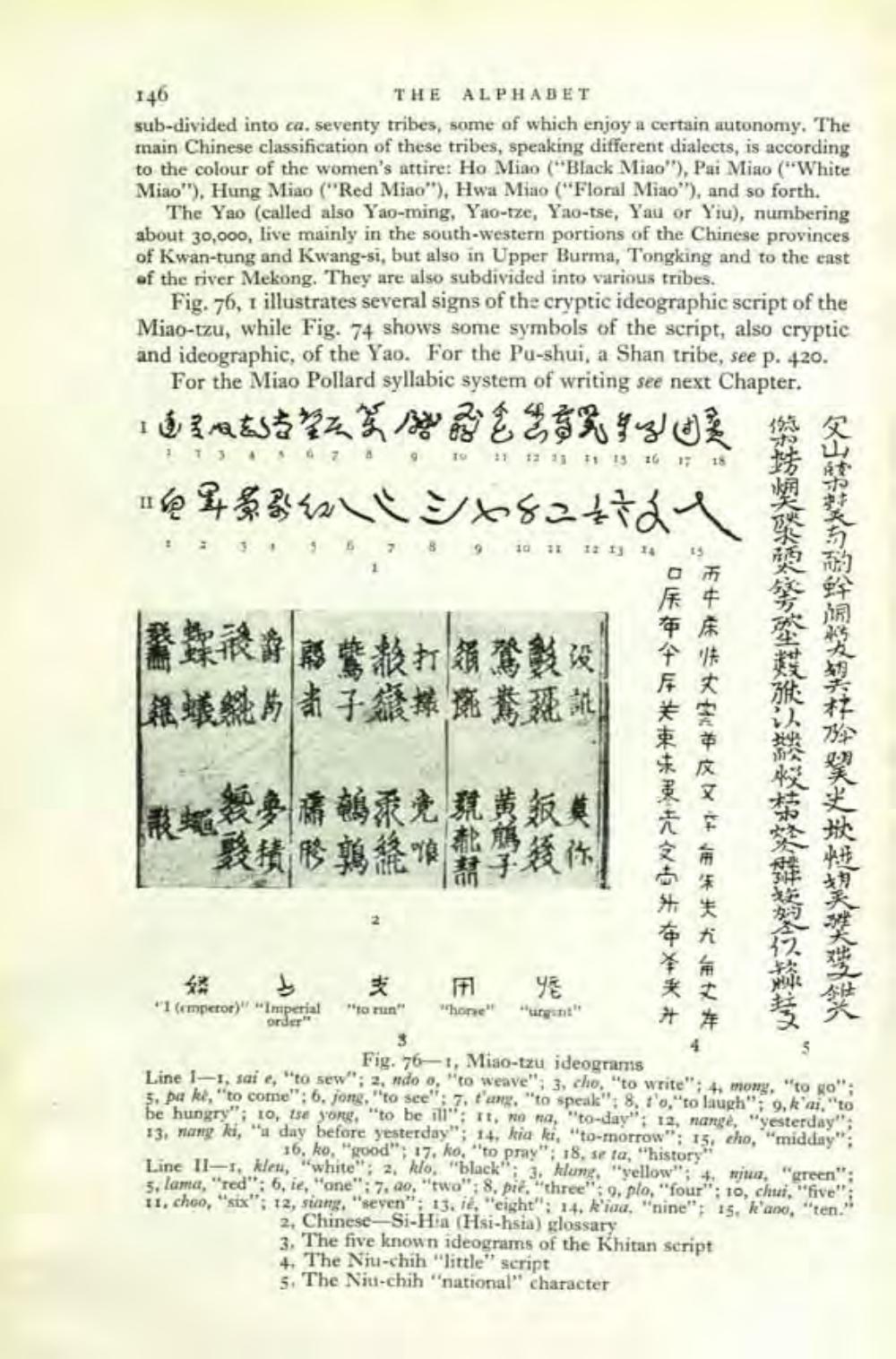________________
146
THE
ALPHABET
sub-divided into ca. seventy tribes, some of which enjoy a certain autonomy. The main Chinese classification of these tribes, speaking different dialects, is according to the colour of the women's attire: Ho Miao ('Black Miao"), Pai Miao ("White Miao"), Hung Miao ("Red Miao"), Hwa Miao ("Floral Miao"), and so forth.
The Yao (called also Yao-ming, Yao-tze, Yao-tse, Yau or Yiu), numbering about 30,000, live mainly in the south-western portions of the Chinese provinces of Kwan-tung and Kwang-si, but also in Upper Burma, Tongking and to the east of the river Mekong. They are also subdivided into various tribes.
Fig. 76, 1 illustrates several signs of the cryptic ideographic script of the Miao-tzu, while Fig. 74 shows some symbols of the script, also cryptic and ideographic, of the Yao. For the Pu-shui, a Shan tribe, see p. 420. For the Miao Pollard syllabic system of writing see next Chapter.
13是古望天笑膠爸爸是
17345678
9
11 12 13 31 15 16 17 18
TO
シャ
5 6 7 8 9 10 11
[鼇錄後驚敲打領鶖氎沒
【無蟻片当子排琬鴦
訊]
12 13 14
報蠅類參禱鵪乘免稅黄販獎
聚積胗鶉終順
盘子
婦
上
支
用
"1 (emperor)" "Imperial OHO run" "home" "urgent"
order"
15
口布伞后关束味處青文中外在学秉汁
而中床味丈会中文文 车用保发尤綸达
突傩忉嬴
父山梨芰融幹
雙
Fig. 76-1, Miao-tzu ideograms
Line 1-1, sai e, "to sew"; 2, ndo o, "to weave"; 3, cho, "to write"; 4, mong, "to go"; 5. pa ki, "to come"; 6, jong, "to see"; 7, tang, "to speak"; 8, t'o,"to laugh"; 9,k'ai, "to be hungry"; 10, tse yong, "to be ill"; It, no na, "to-day"; 12, nangé, "yesterday"; 13, nang ki, "a day before yesterday"; 14, kia ki, "to-morrow"; 15, cho, "midday" 16, ko, "good"; 17, ko, "to pray"; 18, se ta, "history" Line II-1, kleu, "white"; 2, klo, "black"; 3, hlung, "yellow"; njua, "green"; 5,lama, "red": 6, ie, "one":7, 20, "two": 8, pil, three": 9, plo, "four: to, chui, "five" 11. cheo, “six”; 12, siang, "seven"; 13.if, "eight":14, Riaa, "nine”;5. k'ano, “ten 2, Chinese-Si-Hia (Hsi-hsia) glossary
3. The five known ideograms of the Khitan script 4. The Niu-chih "little" script
5. The Niu-chih "national" character




